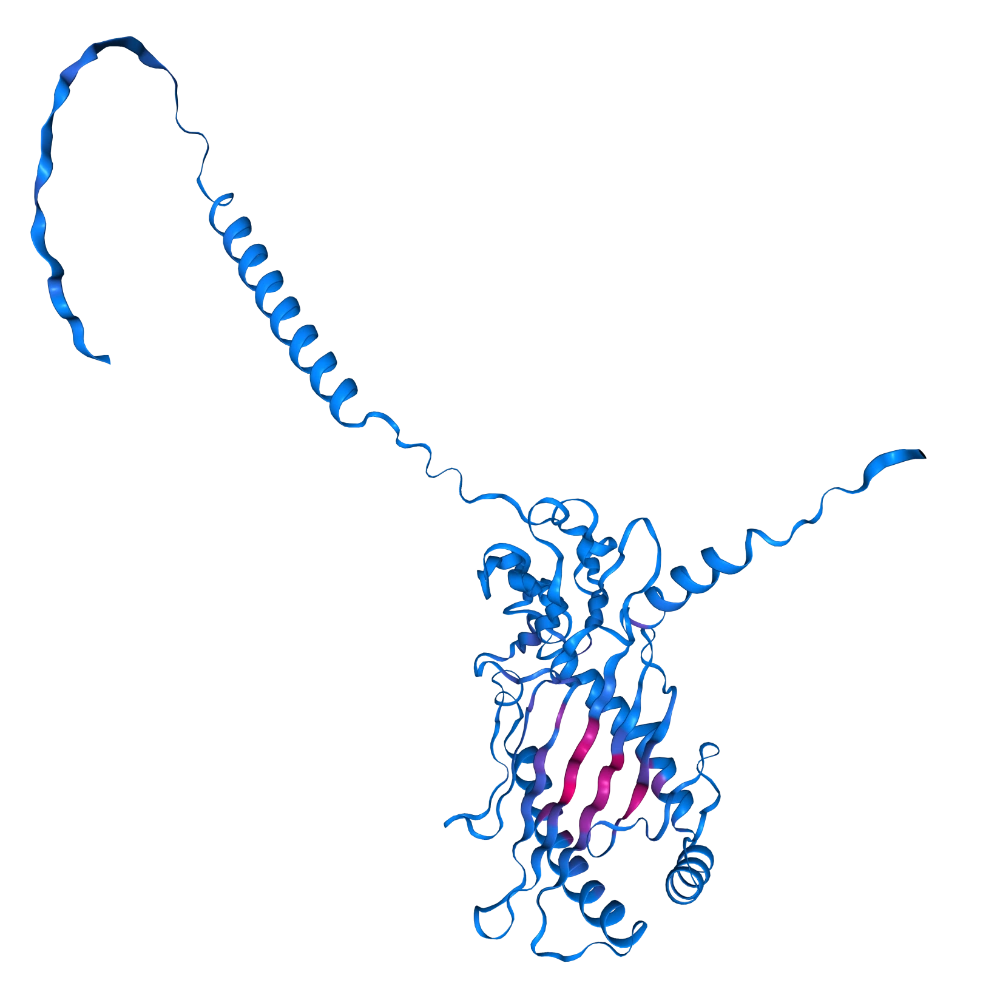AF2BIND for Binding Site Prediction
AF2BIND is a logistic regression model on top of AlphaFold embeddings that predicts the probability that each residue in a protein is in a pocket. Binding site prediction is the problem of detecting where (which residues) on a protein are likely to interact with other molecules. This is also called a binding pocket, pocket, functional site, or sometimes a hotspot. Not all parts of a protein can be easily bound, so identifying where likely sites are can help scientists understand what the function of an unknown protein is, avoid disrupting important sites when engineering a protein, and decide whether or not a candidate protein is a good drug target.
How to Use AF2BIND
Predict pockets in P08100
| resi | p(bind) |
|---|---|
| 265 | 0.925 |
| 268 | 0.8773 |
| 212 | 0.8214 |
Inputs
- PDB File
- A single chain protein structure.
Outputs
- p(bind) Scores
For each residue in the input structure, a probability score of being in a pocket (0.0-1.0). Higher is better.
Examples
Predict binding pockets of P01889
| resi | p(bind) |
|---|---|
| 33 | 0.8715 |
| 123 | 0.8211 |
| 31 | 0.7818 |

Predict binding sites in P32883
| resi | p(bind) |
|---|---|
| 13 | 0.8182 |
| 15 | 0.8126 |
| 16 | 0.811 |